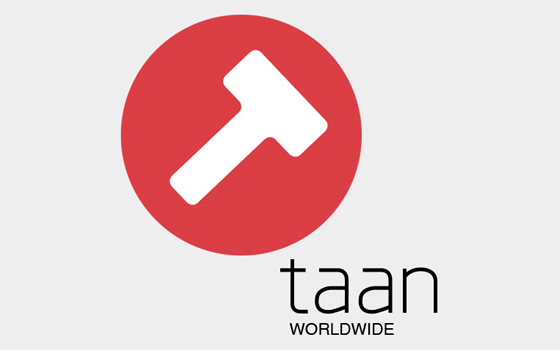I recently joined Peter Gerritsen, president of Taan Worldwide, for a video chat on a range of issues related to the work we at Newfangled do building marketing-driven web platforms for marketing agencies and their clients. We covered some pretty interesting topics, so I thought I’d share the transcript of our discussion here, broken out into three parts (or, if you prefer, you can catch the full video here). In this first post, Peter and I talk about some of the most common issues we see with agency websites today.
Peter: Thank you, Mark. Thanks for joining me. Mark O’Brien is CEO of Newfangled, which is based in North Carolina and an office in Providence, Rhode Island. Newfangled is a business model that really works with agencies and marketers to help them understand and utilize web platforms for business development and growth of the business.
Mark is the author of a book called A Website That Works, and I’d like to understand from you, Mark, what do you think is missing from current sites and development that agencies are using for their marketers these days.
Mark: I think these days the primary thing that’s missing is really a proper integration of systems. Many agencies have come around to positioning … not all by any means, but many — certainly many more than five years ago. A lot of them are putting a stake in the ground on the web, talking about a specific area of expertise they work in. That’s improved a lot over the past five years.
Many are writing about that on their sites, so that’s improved, but very few are putting themselves in a position to get the most from that effort, both the effort of committing to a position and writing content about it.
What’s going on behind the scenes is becoming more and more important. There are tools like marketing automation and CRM that really ought to be helping them along behind the scenes, but few agencies are taking advantage of that in the most effective way possible today. I bet, two years from now, almost all of them are going to be doing it, and almost all of them are going to be doing it for their clients as well, but today that’s quite lacking.
Peter: When you get called from a prospect, how much do you query them on that positioning point of view to say, “Wait a sec. Before we get started, let me understand what you are?” Are you checking that out first?
Mark: Absolutely if they’re considering using us to build their site, which is about what goes on maybe half the time … so we spend a lot of our time partnering with agencies to help them with client sites, and then the rest of the time partnering with them to help them on their sites.
If it’s about their site, then that’s the first thing that comes up. Guys like David Baker and Tim Williams and Blair Enns, they’ve got really great and deep approaches for defining a positioning for an agency and testing positioning statements for agencies. That’s not my turf at all, but I can suss out a good positioning.
My test is a really simple one. It’s a two-part test to determine whether or not I think that the positioning is specific enough to float a strong website strategy, and those two tests are these: First, can you go out, as the agency, and right now, today, buy a list? Can you buy a list of just dead-on prospects, at least 2000-5000 of those people? Can you go and do that right now?
If you’re a generalist agency, the answer is no because you can’t buy a list of everybody. Can you go out and buy all the CMOs at healthcare systems in North America that generate at least $100 million in revenue a year? Can you do that? If you can, that’s a good sign.
The other test is, if your ideal prospect landed on your site, on any page at all, home page or subpage … if your sweet-spot target landed on the site and they read your positioning statement, would they be able to say, “Yes, that’s me?” Would that work? Would they instantly identify with that positioning?
If you have those two things in place, from my perspective, it’s quite likely that you’re going to get a lot out of the web system. If you don’t have those in place, you really have to set your sights a lot lower in terms of the return you expect to get from your web marketing, and from lots of other marketing as well.
Peter: So here you are, you’re talking to agencies about their clients and their own sites as well. What do you think is really missing, the flaw that they’re not getting with the current state of their sites? Everybody’s got a site, and you’re helping them create a new direction in the business development. What do you think that fundamental flaw is in the existing ones that you’re not doing?
Mark: The fundamental flaw in the typical agency website?
Peter: Yeah.
Mark: I would say there does tend to be a lack of proper perspective, and it’s because it’s hard for them to remove themselves. Again, David Baker talks all about how agencies are inside the bottle and they can’t read the label on the outside. That’s an analogy he uses all the time, and it’s a really good one. They’re so caught up inside of their own firm that they don’t take the time to step outside and think about why they have a website in the first place. It’s very easy to get caught up in the current trends. It’s very easy to get caught up with what your peers are doing.
In any industry, people tend to just do what everyone else is doing. In credit unions, healthcare, manufacturing … whatever it is, when they want to do a new website, the first thing they’re going to do is go and look at everyone else’s site. I used to do the same thing all the time, and because Teehan+Lax does something, then everyone has to do that thing.
That’s really dangerous. You want to step back and think about who your prospect actually is, and start with their need and why they might arrive on your site, and how you might want them to get to the site, and what’s the journey you want them to take once they get there. Really keep your eye on that ball and that ball only. That, I think, would really have a huge impact on many, many agency sites.
I see examples of that, where the agency site tends to be too much about themselves and not enough about their prospects. It sounds quite basic, but we’re talking about the most fundamental aspect that could be changed to greatly improve the sites. That’s the thing.
Peter: That thing goes back to the whole start of this conversation about positioning. If you don’t have a strong, concise, easily-identifiable position, you end up building a site that tries to talk to everybody, which means it talks to nobody. You have to understand how that works and then work it from the outside in, and how you build those things in, right?
We’ll pick up on this conversation again in the second installment, which will focus on the role of content strategy and social media.


